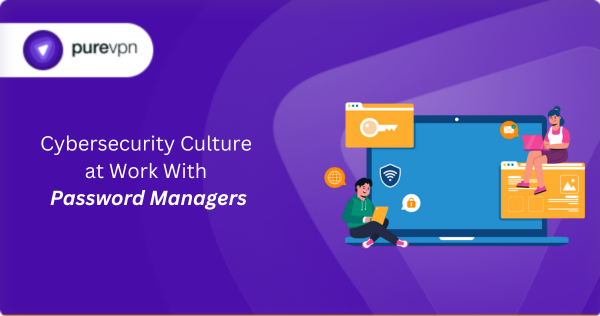Imagine this: A growing company lost thousands of dollars because one employee reused a simple password across multiple accounts. Hackers got in through a compromised email, and before anyone knew it, sensitive data was leaking, customers were worried, and the company’s reputation took a serious hit.
Stories like this happen way more often than you think. Weak or reused passwords remain one of the easiest ways cybercriminals break in, and it’s rarely because employees don’t want to be careful. The real issue is that managing strong, unique passwords for dozens of accounts is a hassle.
Your credentials may be at risk.
Run a free email scan to see if your data has been exposed — no signup needed.
That’s where building a strong cybersecurity culture comes in. And among the many tools available to help make this easier, password managers stand out as simple, effective solutions that help everyone, from the newest hire to the CEO, safeguard their accounts without a headache.
What is Cybersecurity Culture?
Cybersecurity culture is simply the way people in an organization think about and act on security every day. It goes beyond firewalls and software—it’s about everyone understanding their role in keeping data and systems safe.
A strong cybersecurity culture means employees don’t see security as a chore or a barrier but as a shared responsibility. They follow best practices because they know it protects not just the company, but their own work and reputation too.
Building this culture takes time and effort, but it’s key to stopping data breaches before they happen. And that’s where tools like password managers can make a real difference by making good security habits easy and automatic.

The Importance of Password Managers for Businesses
Passwords remain one of the weakest links in cybersecurity. According to the 2025 Verizon Data Breach Investigations Report (DBIR), 22% of breaches involved stolen credentials, making them a primary entry point for cyberattacks.
Furthermore, a report by SpyCloud highlights that in 2023, nearly 1.38 billion passwords were circulating on the dark web, marking an 81.5% increase from the previous year. These numbers make it clear: managing passwords properly is a must to keep your business safe.
Poor password practices can lead to data loss, financial damage, costly recovery efforts, and harm to brand reputation. Managing strong, unique passwords for dozens of accounts overwhelms employees, causing them to take risky shortcuts like reusing passwords, writing them down, or choosing simple ones.
Password managers offer a straightforward and effective solution to this challenge. They help employees maintain good password hygiene by simplifying password creation and management. Here’s how:
- Generate strong passwords: Creates complex, unique passwords for every account, reducing risk of breaches.
- Secure storage: Encrypts and safely stores all passwords in one place, so employees don’t have to remember them.
- Auto-fill login credentials: Saves time and reduces errors by filling passwords directly into login fields.
- Password sharing: Allows secure sharing of passwords within teams without exposing plain text.
- Security alerts: Notifies users if passwords are weak, reused, or exposed in data breaches.
- Cross-device syncing: Keeps passwords accessible across computers, smartphones, and tablets for seamless use.
Adopting the right password manager and encouraging (and rewarding) its regular use is an important first step toward creating a stronger cybersecurity culture and protecting your organization from avoidable risks.
Related Read: How Does a Password Manager Work?
How to Build a Cybersecurity Culture at Work Using Password Managers
Building a strong cybersecurity culture starts with practical steps that make security easy and natural. Here are five tips to use password managers as the foundation for safer habits across your team.
1- Use Password Managers to Simplify Strong Password Creation and Storage
Creating strong, unique passwords for every account sounds simple but is a real challenge for most employees. Remembering dozens or hundreds of complex passwords isn’t realistic, which often leads to password reuse or weak choices. Password managers take this burden off everyone’s shoulders by generating strong passwords automatically.
With just a click, employees get a secure, unique password saved safely without lifting a finger to memorize it. By making strong password creation easy, password managers remove a major obstacle to good security habits. This simple change helps reduce the risk of breaches caused by weak or repeated passwords and sets the tone for a culture that values security.
2- Integrate Password Manager Training into Employee Onboarding and Security Awareness Programs
First impressions matter. Introducing new hires to password managers during onboarding sets the right security expectations from day one. Training sessions should show how to use the tool, explain why it matters, and highlight its role in protecting both personal and company data.
Regular security awareness programs should also include refreshers on password manager best practices, keeping the tool top of mind for everyone. The more comfortable employees become with the password manager, the more likely they are to use it consistently, turning it into a natural part of their daily routine.
3- Enforce Password Manager Usage Through Policies and Role Modeling by Leadership
Policies make security expectations clear, but they’re most effective when backed by consistent enforcement. Require the use of password managers in your cybersecurity policies, making it an official part of how everyone manages passwords.
Leadership plays a critical role here. When managers and executives openly use password managers, it sends a powerful message that security is a shared priority. This role modeling encourages employees to follow suit and helps normalize the behavior throughout the organization.
4- Leverage Password Manager Features to Promote Good Habits
Password managers come packed with features that encourage secure behavior without extra effort. Auto-fill saves time and avoids typing errors by entering login details instantly. Secure password sharing lets teams collaborate safely without risking exposure.
Many password managers also send alerts when passwords are weak, reused, or found in data breaches, nudging users to update them promptly. Encouraging employees to take advantage of these features helps build security into their daily workflow naturally.
5- Monitor Password Manager Adoption and Use Feedback to Continuously Improve Security Culture
Rolling out password managers is just the start. Keep an eye on how widely and effectively they’re being used across the organization. Many tools offer reports on adoption rates, password strength, and security alerts that can highlight gaps.
Collect employee feedback regularly to understand any challenges or resistance. Use these insights to tailor training, address concerns, and celebrate successes. Ongoing support and adaptation ensure that password managers remain a living part of your cybersecurity culture, not just a one-time project.
Final Word
Building a strong cybersecurity culture at work doesn’t necessarily have to be a complicated endeavor. Password managers offer a practical way to make good security habits easy and part of everyday work life.
By simplifying strong password creation, integrating training, enforcing policies, leveraging helpful features, and monitoring adoption, organizations can protect themselves from many avoidable risks. Starting with password managers sets the foundation for a security-first mindset, one that involves every employee and keeps your business safer.









